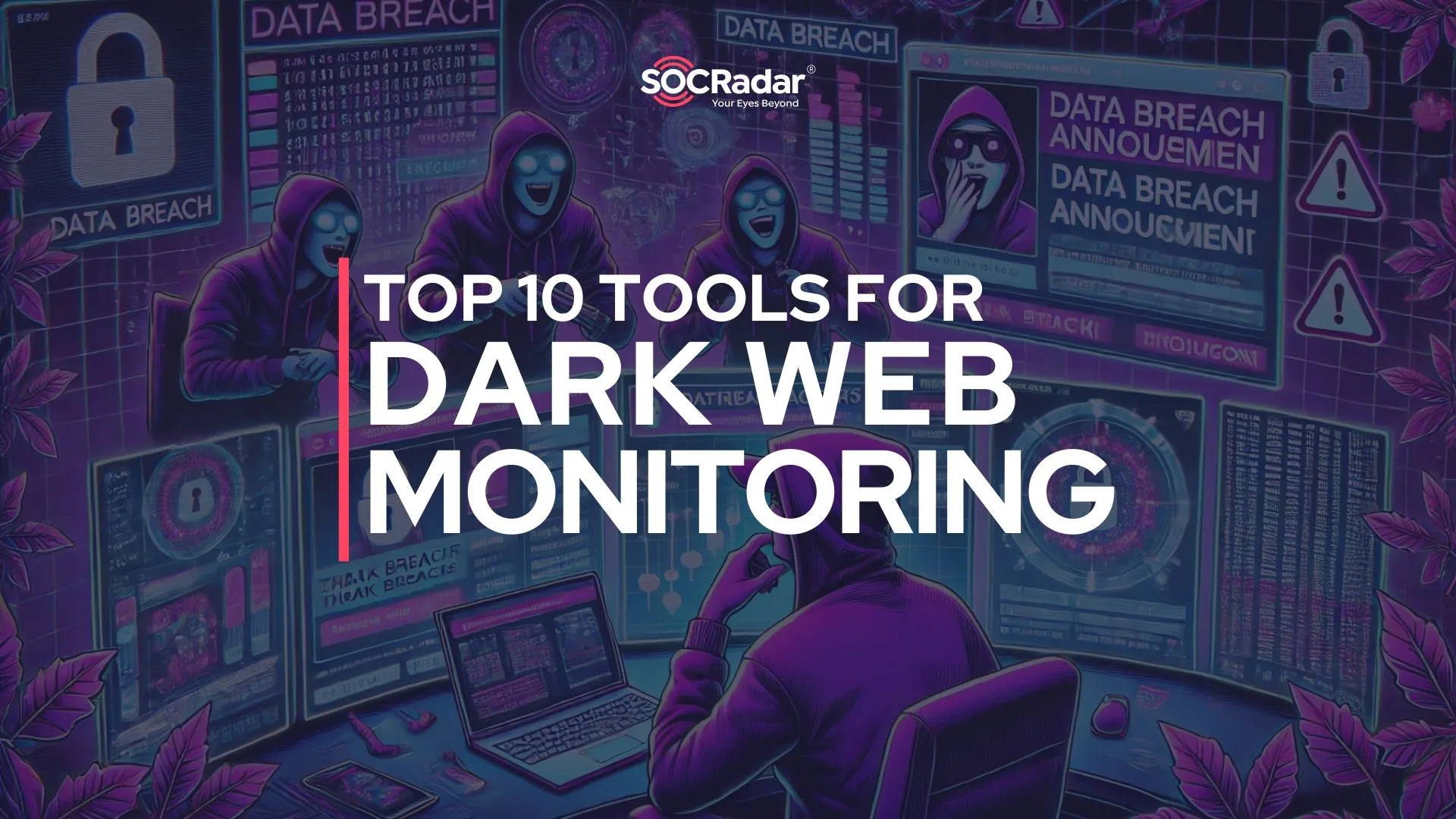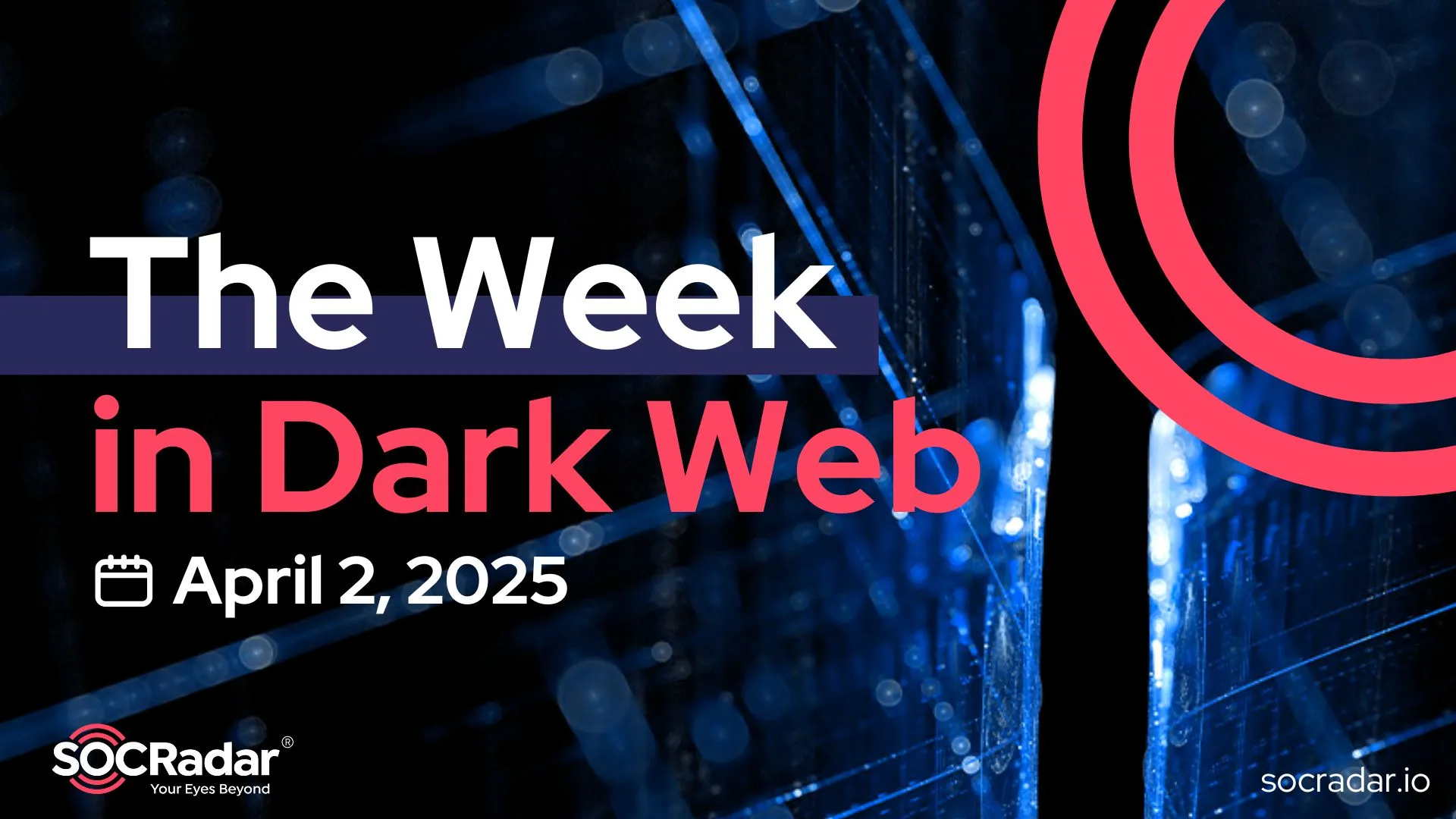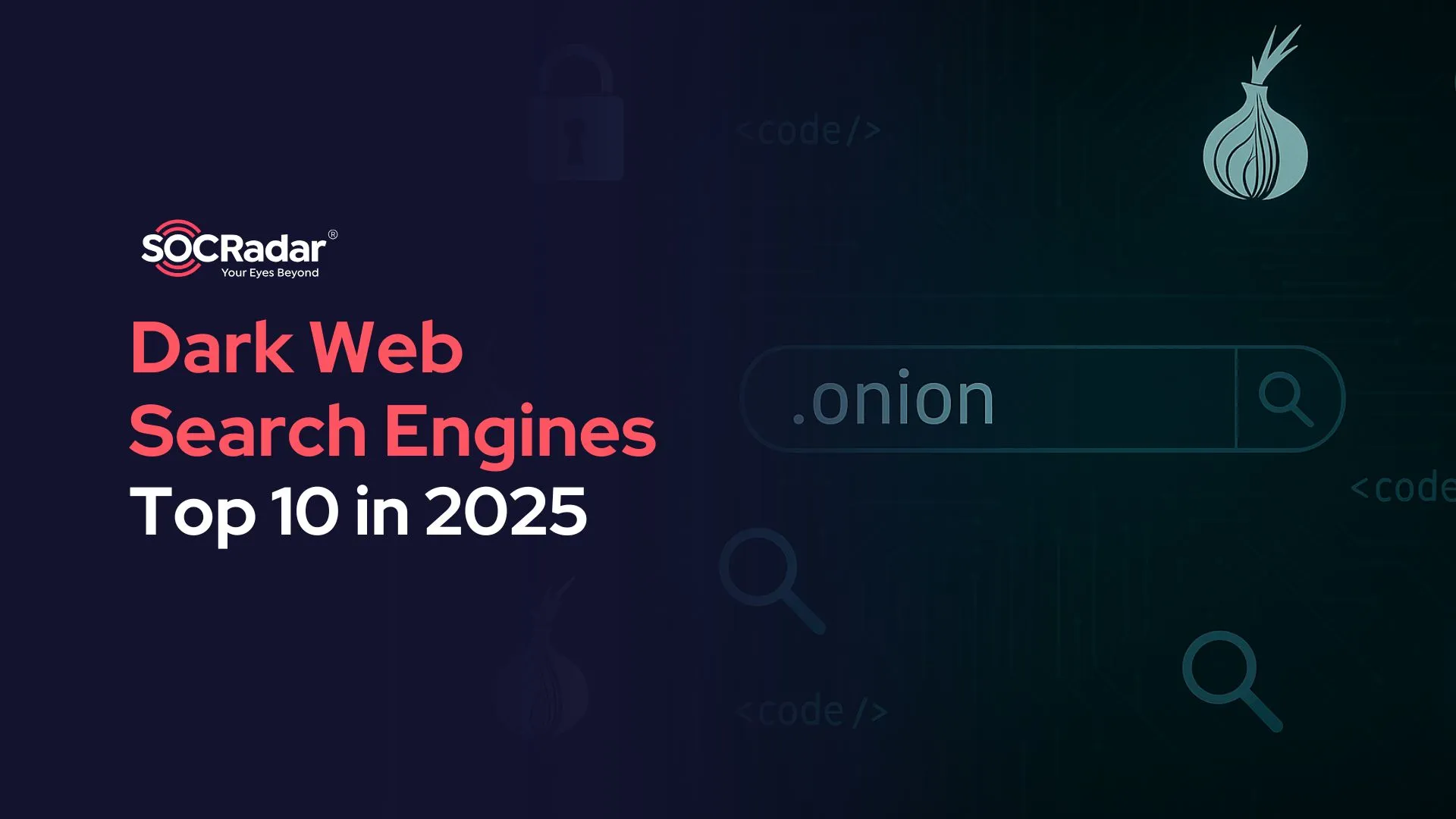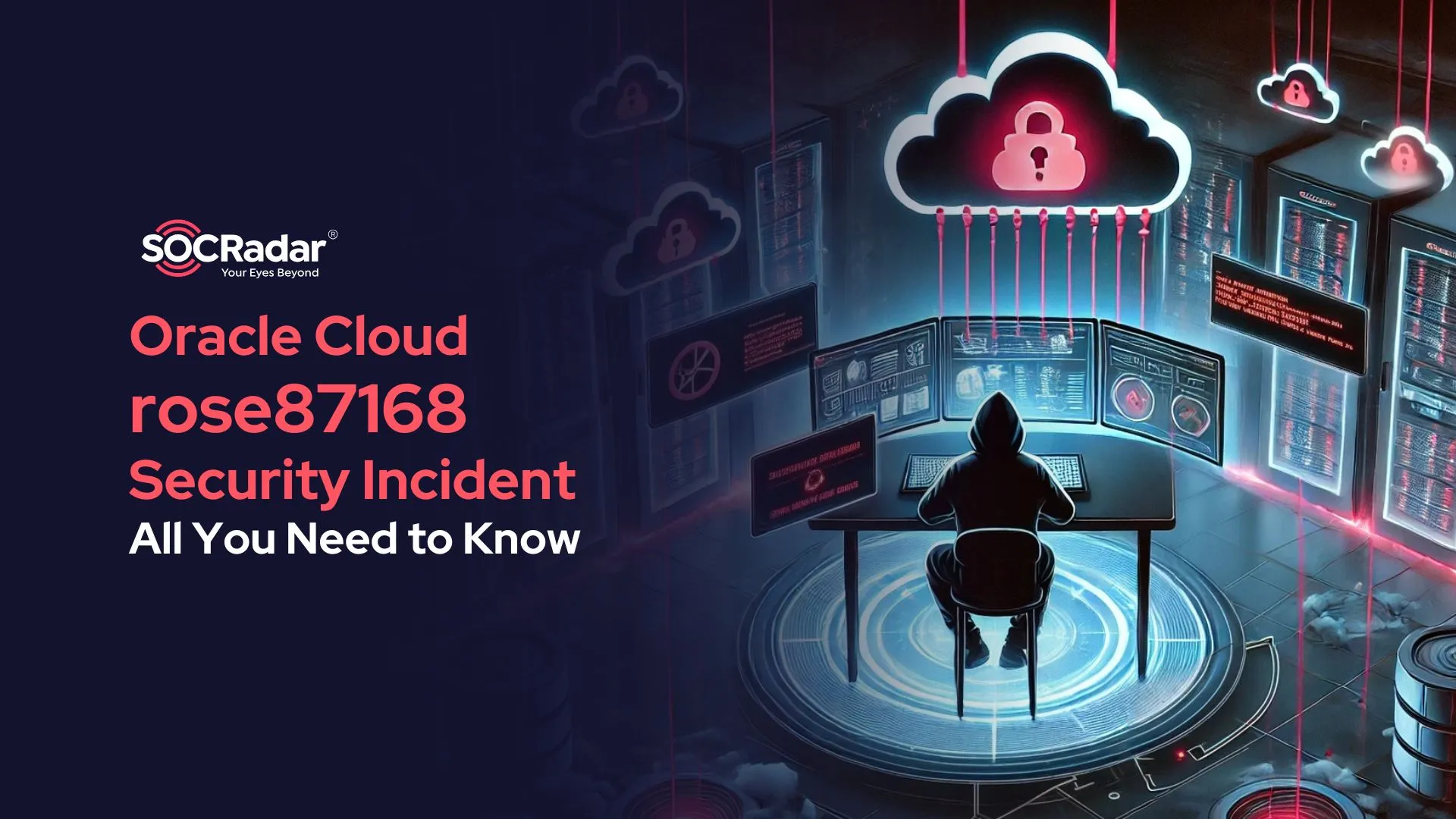
What is Deep Web Monitoring?
There are a variety of network monitoring and perimeter protection solutions available for both personal and commercial networks. Nevertheless, even the most protected businesses may fall prey to a cyber assault. The terrifying aspect of this is that data may be hacked without anybody except the cybercriminal being aware.
Hackers are constantly developing methods to cover their traces. Most daily data breaches go undiscovered because hackers know how to steal massive quantities of data without raising warnings for suspicious behavior. Even log files are susceptible to modification, prompting the development of tamper evident logging.
How can we possibly comprehend the extent of undetected data breaches if they remain undetected? This is quite a dilemma. But it does not imply it doesn’t happen. There are a variety of network monitoring and perimeter protection solutions available for both personal and commercial networks.
Deep Web and Darknet
The deep web, also known as the unseen web, comprises websites and data sources that search engines like Google on the surface web are not indexed or discoverable. The deep web is believed to be at least 400–500 times larger than the surface web.
The deep web consists of websites that are password- and paywall-protected (such as personal social media accounts and online banking dashboards) or dynamic and encrypted networks. The word “deep web” is not synonymous with the darknet/dark web; nonetheless, it does include the darknet/dark web.
To access the darknet/dark web, specialized software, such as the Tor browser, is required. The dark web provides users with complete anonymity. This is why a significant number of criminal behavior occurs there, including selling unlawful commodities, exploiting humans, and discussing illegal themes.
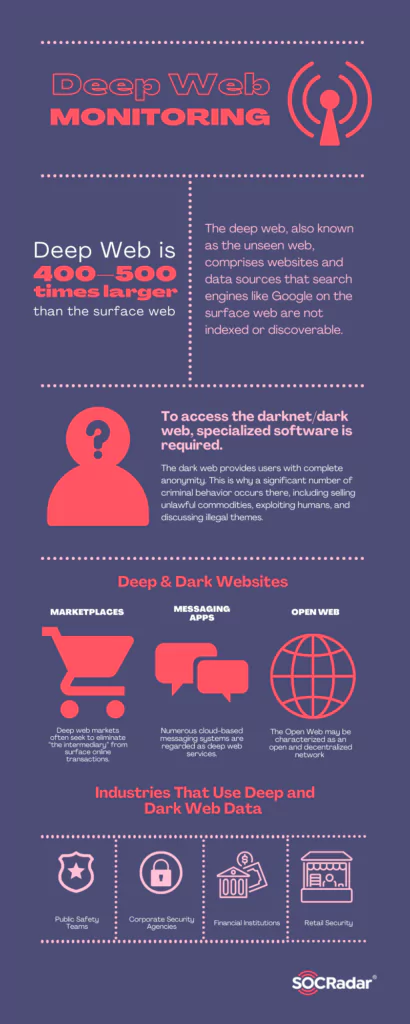
Accessing the dark web is not unlawful in and of itself, yet many actions on the dark web are forbidden. Due to the anonymity of its users, the dark web is also utilized for less harmful purposes, such as bypassing the government censorship and shielding whistleblowers.
Contrary to common opinion, darknet material is not difficult to get; nonetheless, it is tough to browse due to the absence of indexed or controlled sites. Unskilled darknet usage may be hazardous, and locating anything particular or valuable is time-consuming.
Deep and Dark Websites
Marketplaces
Deep web markets often seek to eliminate “the intermediary” from surface online transactions. To avoid expenses associated with standard payment methods such as PayPal, buyers and sellers on deep web markets utilize cryptocurrencies and interact directly. Illicit activity is sometimes difficult to trace and regulate, even though many demands on the dark web do not specialize in unlawful transactions.
Messaging Apps
Numerous cloud-based messaging systems are regarded as deep web services. These platforms are extensively used to discuss or create games, exchange funds between users, and discuss similar interests with varying degrees of security. Some deep web messaging applications are entirely encrypted, while others permit users to establish private, password-protected, or public channels on their servers.
Even though messaging apps are not generally meant to host illicit activities, there have been several incidents of phishing fraudsters utilizing these applications to contact their victims. Others have been associated with explicit, illegal, or NSFW (Not Safe For Work) material. For instance, Discord is related to conversations concerning unlawful activities and the alt-right movement. It was founded in August 2017 as a planning tool for the “Unite the Right” protest in Charlottesville, Virginia.
Open Web
The Open Web may be characterized as an open and decentralized network (many parties share control), accessible (anyone can join without seeking permission), and open-source (anyone can alter or enhance it) (anyone can modify or improve it).
It may also be characterized by what it is not: the “walled gardens” of the internet, where the material is centralized and monetized (Facebook and Google, for example). These walled gardens provide a more direct and regulated user experience. Still, at the expense of some liberties, algorithms govern what information is released, and authors are limited to the services created by the sites.
Content on the open web is freely available, although search engines such as Google may or may not index it. Pastebin and Craigslist are instances of publicly accessible websites.
What Threats Exist on the Deep and Dark Web?
Most corporate security specialists and public safety authorities search for stolen and illicit items, drug and human trafficking, attack planning, selling and leaking data and information, money laundering, and fraud-related crimes and evidence.
The following are particular instances of darknet usage:
- The discussion and sale of “How-To” manuals. The subject matter of guides might range from how to manufacture illegal substances to how to commit fraud against an organization.
- They are releasing selling personal data. Personal data breaches are often exploited to obtain access to bank accounts or to harass people (“doxing”).
- The purchase and sale of fake tax papers. Frequently, cybercriminals will acquire and submit phony tax paperwork before a legitimate person can.
- Disclosure of sensitive national security information, such as defense tactics, weapon designs, or construction blueprints.
- The leaking or theft of source code. This makes it easy for hackers to detect whether your organization’s operating systems or security software has weaknesses.
- The sale of “spoofing” templates Using spoofing templates, fraudsters may develop false websites or forms impersonating an organization to obtain personal information.
- They are exposing corporations’ databases. This compromises critical information on employee accounts and the company’s broader presence, including partnerships and private contracts.
- Hiring for illicit purposes, including hitman services and human trafficking.
- Purchasing and selling illicit drugs or items.
- Observing and trading child pornographic material.
Industries That Use Deep and Dark Web Data
The following industries routinely monitor deep web and dark web sites to identify and prevent common threats:
Public Safety Teams:
- Identify instances of drug, weapon, and human trafficking.
- Find forums and marketplace listings about cybercrime.
- Observe conversations among threat actors (planning attacks or other crimes)
- Locate counterfeit passports and other documents
Corporate Security Agencies:
- Protect company image
- Identify internal threats
- Discover data breaches
- Protect executive information and ensure its security
- Detect and prevent DDoS assaults
Financial Institutions:
Identify and defend against:
- Money laundering
- fraudulent currency
- Credit card fraud
- Internal attacks
- Data compromises
- Phishing attacks launched by employees
- Cryptojacking, malware, and ransomware
- Insecure cloud service providers and third-party suppliers
- Spoofing and Distributed Denial of Service assaults
- ATM attacks
Retail Security:
- Discover stolen goods and fake sales
- Find fake gift cards.
- Investigate the scene of a burglary.
- Fraud using Discover company-issued credit cards
Conclusion
Security threats are standard on the deep and dark web regardless of whether they are actively sought. Though most activity on these sites is innocuous, deep and dark web threat information is essential for corporate security and public safety.
The deep and dark web is vast and continually evolving. OSINT training and technologies that collect data from the deep and dark web may aid companies in identifying and mitigating dangers associated with data breaches, illegal commodities trading, and exploitation.
IT security teams have put a specific quantity of fake PII on their corporate networks to boost the efficacy of a deep web monitoring service. It is comparable to how police mark banknotes to capture mobsters and drug traffickers engaged in criminal business.
IT teams will install a predetermined quantity of bogus data in their systems in case of an unnoticed data breach. Then, they may use monitoring technologies for the deep web to track down the fake data. This fabricated data is effectively a “marked bill” covered on the dark web, confirming that a data breach has happened.
Automation and AI will have to play a far more significant part in the deep web monitoring industry since this sort of security solution entails combing the dark web and analyzing massive amounts of data. Time will tell when this will become a standard method of data breach detection.
However, we live in a world where our data are continuously under siege. Patching network vulnerabilities and boosting perimeter defense will aid in discovering a data breach, but deep web monitoring may be the next step in detecting a breach.






























